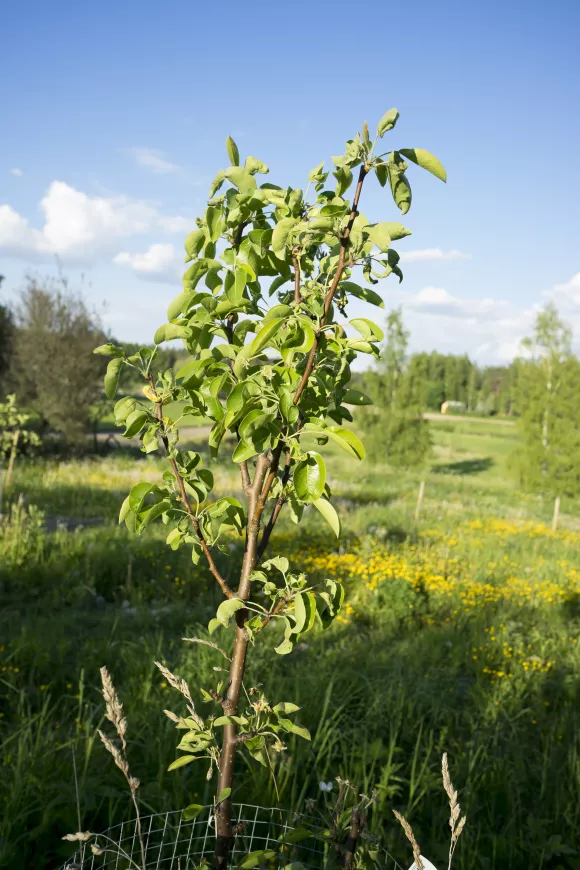What is a food forest?
A forest garden, also known as a food forest or edible forest garden, is a sustainable, low-maintenance, and self-replicating agricultural system that mimics the structure and diversity of natural forests. The main idea behind a forest garden is to cultivate food crops and useful plants by taking advantage of the natural interactions between plants, animals, and the environment.
The 7 layers
Forest gardens are typically designed with multiple layers or stories, each consisting of various types of plants that serve specific functions. Here are the main layers of a forest garden:
- Canopy layer: Comprised of large fruit and nut trees, which provide shade, produce food, and create habitat for various creatures.
- Understory layer: Consists of smaller trees and large shrubs, often fruit-bearing or nitrogen-fixing, that can tolerate partial shade.
- Shrub layer: Includes fruiting and flowering shrubs that provide food, habitat, and support for pollinators.
- Herbaceous layer: Contains perennial and self-seeding annual herbs, vegetables, and edible flowers, which can be harvested for food, medicine, or other uses.
- Groundcover layer: Features low-growing plants that spread out to cover the soil, preventing erosion and suppressing weeds.
- Rhizosphere or root layer: Comprises plants with edible roots, such as carrots, beets, and potatoes, as well as those that help break up compacted soil or accumulate nutrients.
- Climber or vining layer: Involves climbing plants, such as beans, peas, and edible vines, which can be trained to grow up trees, trellises, or other structures, maximizing vertical space.
A well-designed forest garden creates a diverse and resilient ecosystem that requires minimal inputs, such as watering and fertilizing, and generates abundant yields of food, medicine, and other useful products. This approach to gardening can contribute to biodiversity conservation, soil regeneration, and climate change mitigation, as well as providing a source of nutritious and diverse food.


History of Food Forests
The concept of food forests, or forest gardens, has deep historical roots that span across multiple cultures and continents. Although the exact origin is hard to pinpoint, some of the earliest examples of food forests date back thousands of years.
Indigenous cultures
Indigenous peoples from various regions, such as the Amazon Basin in South America, the tropical regions of Africa, and Southeast Asia, have long practiced forms of agroforestry and managed the forest ecosystems for food production. They cultivated a diverse range of plants, such as fruit trees, root vegetables, and medicinal herbs, in harmony with the natural environment.
Ancient Asia
The concept of forest gardening can be traced back to ancient China and India. In China, the Han Dynasty (206 BCE – 220 CE) documented the use of complex forest gardens with diverse plant species, including fruit and nut trees, bamboo, and tea plants. In India, traditional agricultural systems such as the "homegarden" incorporated elements of food forests, with multi-story arrangements of various plants, including trees, shrubs, and herbs.
Pre-Columbian Mesoamerica
The Mayans and other indigenous peoples in Central America practiced a form of forest gardening known as the "milpa" system. This involved rotating between cultivated plots and fallow areas, allowing the forest to regenerate. The milpa system incorporated a wide variety of plants, including corn, beans, squash, and fruit trees, which supported each other and maintained soil fertility.
Middle Ages in Europe
Medieval Europe saw the use of "hügelkultur" in Germany, where mounds of decaying wood and organic matter were used to grow plants. While not strictly forest gardening, this practice shares some similarities with the multi-layered approach of food forests. In other parts of Europe, forest gardens were used to provide food, medicine, and materials for communities living near monasteries or castles.
Modern times
The concept of food forests has been popularized in recent decades by permaculture pioneers such as Bill Mollison, David Holmgren, and Robert Hart. Permaculture principles have helped refine and adapt forest gardening practices for a wide range of climates and conditions, making it more accessible and appealing to modern gardeners and farmers.
